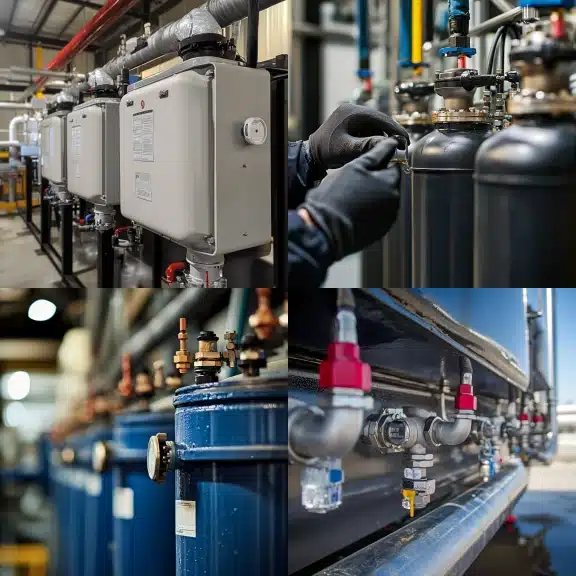
A full or clogged diesel fuel filter water separator, especially in engines like the Paccar MX-13, can cause severe damage, increased fuel costs, and poor performance. Warning signs include engine sputtering, dashboard alerts, and visible water or microbial growth. Routine maintenance—like draining the separator and using fuel additives is essential for long-term engine health. Red River provides guidance and quality solutions to keep your diesel systems running at peak efficiency.
Diesel Fuel Filter Water Separator Problems (2024): Warning Signs, Fixes & Maintenance
A fuel water separator filter is an essential component in keeping your engine running smoothly, especially for heavy-duty engines like the Paccar MX-13. If your fuel water separator filter becomes clogged or full of water, it can lead to severe engine damage, costly repairs, and unnecessary downtime. Understanding the signs of a full or clogged separator is crucial for maintaining the efficiency and longevity of your diesel engine. In this guide, we will break down the common signs, consequences, and steps you can take to address a full fuel water separator filter for your Paccar MX-13.
Identifying and Fixing a Full Fuel Water Separator
A fuel water separator is designed to protect your engine from water and contaminants that may enter the fuel system. However, when it becomes full or clogged, it can no longer perform its job effectively, causing a range of issues that affect engine performance.
Common Signs of a Full Fuel Water Separator Filter
- Engine Sputtering or Stalling
If your engine sputters, stalls, or shows signs of hesitation, especially during startup, this may be an indication that the fuel water separator is full. This is due to water contaminating the fuel system, which disrupts the combustion process.
- Dashboard Warning Lights
Many modern diesel engines, including those with the Paccar MX-13, are equipped with sensors that trigger a warning light when there is water in the fuel. If you notice a dashboard warning light specifically for water-in-fuel, it’s time to inspect and drain the separator.
- Visible Water or Microbial Growth
One of the clearest indicators that your fuel water separator needs attention is the appearance of visible water in the fuel system. If you notice microbial growth or “diesel bug” formation, this suggests that your separator is full and failing to filter the water properly.
- Diesel Gelling or Cloudiness
If you’re experiencing diesel gelling in cold conditions or noticing cloudiness in the fuel, it’s another sign of a compromised fuel water separator. Water mixed with fuel can cause gelling, which negatively affects engine performance.
- Unusual Engine Noises
Listen for gurgling or humming sounds coming from your engine. These noises may indicate that water has entered the fuel system, which can be caused by an overfilled separator.
Consequences of a Full Fuel Water Separator
Failing to address a full fuel water separator filter can lead to a number of issues that severely impact engine performance and longevity.
- Decreased Engine Efficiency
A clogged separator forces the engine to work harder, which can lead to a loss of power, reduced fuel efficiency, and, in extreme cases, engine failure. If you ignore these signs, the risk of long-term damage increases.
- Increased Fuel Consumption
When water gets into the fuel system, the engine burns fuel less efficiently, leading to higher fuel consumption and increased costs. This also accelerates engine wear and decreases its overall lifespan.
- Risk of Water Contamination
Water mixed with fuel can corrode fuel injectors and other critical components, disrupting the combustion process. This contamination can lead to serious damage, expensive repairs, and equipment downtime.
How to Maintain and Prevent Issues with the Paccar MX-13 Fuel Water Separator
- Regular Draining and Inspection
It’s important to regularly inspect and drain your fuel water separator. Experts recommend draining your separator every 5,000–10,000 miles or as needed based on your operating environment. Routine maintenance can prevent a lot of costly issues down the road. For more tips on proper maintenance, visit Why It Is Important to Drain Water From Your Fuel Manager. - Use Diesel Emulsifier Additives
After draining the separator, consider using a diesel emulsifier additive. This helps to break down any residual water, preventing microbial growth and keeping your fuel system clean. - Use High-Quality Fuel
Using premium fuel with fewer contaminants reduces the amount of water your separator needs to process. This can extend the life of both your separator and your engine. Learn more about the importance of clean fuel in Understanding Fuel Water Separators in Diesel Engines. - Regular Fuel Filter Maintenance
Keep your fuel filters clean and replace them as needed. Clean filters ensure that impurities are removed before they reach the separator, keeping your engine running smoothly.
For more details on maintaining your fuel water separator, you can refer to resources like Understanding the Importance of the Right Fuel Water Separator Size, Fuel Water Separator Maintenance, and Fuel Water Separators in Diesel Engines.
Keep Your Engine Running Smoothly by Managing Your Fuel Water Separator
In summary, a full fuel water separator filter can lead to costly damage, decreased engine performance, and excessive fuel consumption. By regularly maintaining your separator, using high-quality fuel, and staying vigilant for warning signs, you can ensure your Paccar MX-13 operates efficiently and reliably. Don’t wait for issues to escalate; address any potential problems early and avoid costly repairs.
Ensure Your Diesel Engine’s Performance
Don’t let a full fuel water separator filter affect your engine’s performance. Keep your equipment running at its best by following regular maintenance practices and addressing any issues immediately. Reach out to us for expert advice and assistance with your fuel water separator needs. Contact Red River Team
Frequently Asked Questions
1. How Often Should I Drain My Fuel Water Separator?
It’s recommended to drain your separator every 5,000–10,000 miles, or as needed based on your operating conditions. Harsh environments may require more frequent maintenance
2. Can I Clean My Fuel Water Separator Instead of Replacing It?
Many separators can be cleaned, but if the filter is no longer effective, replacement may be necessary. Always consult your manufacturer’s guidelines for optimal maintenance.
3. What Are the Symptoms of Water in My Diesel Fuel?
Symptoms include engine sputtering, stalling, dashboard warning lights, and visible water in the fuel. Gurgling or humming sounds from the engine are also common indicators.
4. What Is the Cost of Replacing a Fuel Water Separator?
Replacement costs range from $50 to $300, depending on the brand and equipment. Labor costs may add $100–200 if serviced professionally.
5. Why Is Fuel Water Separator Maintenance Crucial?
Proper maintenance prevents water contamination in the fuel system, reduces wear on engine components, and ensures reliable engine performance.
Key Takeaways
- A full fuel water separator filter can cause engine sputtering, stalling, and performance loss.
- Regular maintenance, such as draining and inspecting your separator, can prevent engine damage.
- Use high-quality fuel and additives to maintain your fuel system and reduce the need for repairs.
- Monitor for warning signs like unusual engine noises, dashboard lights, and water contamination.
By staying proactive and following best practices, you can extend the life of your Paccar MX-13 and avoid costly repairs.
Related Blog Post
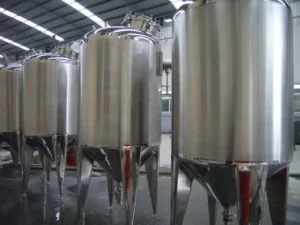
How a Glycol System Works
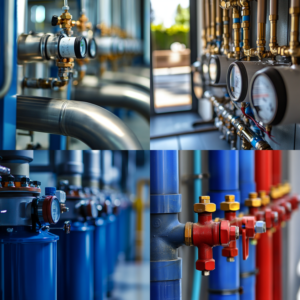
Ethylene Glycol Water: A Complete Heat Transfer Guide
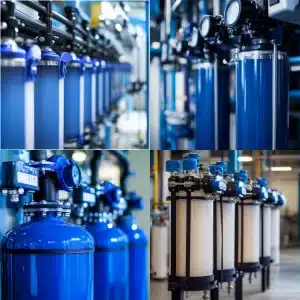
Water Filter Replacement
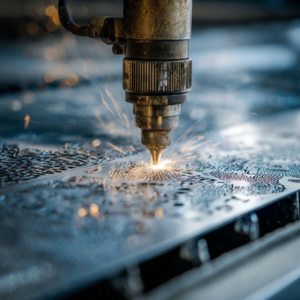
Why Use Stainless Steel Sheet Metal Fabrication?
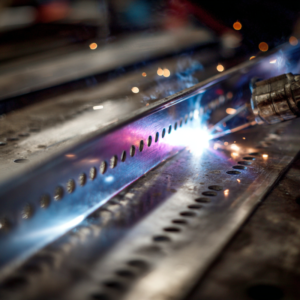
How Does Stainless Steel Sheet Metal Fabrication Work
No subpillar set for this blog post.
About Author

